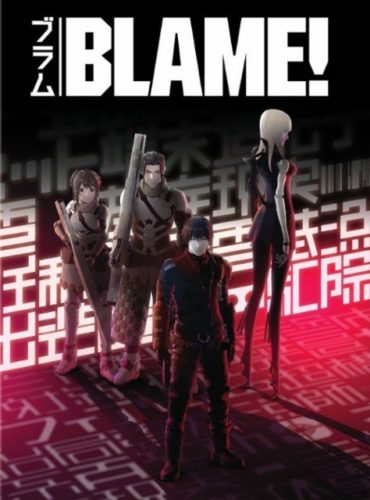BLAME! Review
Jim Morrison: “The future is uncertain and the end is always near”.
BLAME! the film cannot really be described as a direct adaptation of Tsutomu Nihei’s manga of the same name. The director, Hiroyuki Seshita, and those at Polygon Pictures have instead taken many aspects of the story, in collaboration with Nihei, to create what Seshita himself describes as a “so-called entry-level story”. One that takes the setting of the manga and translates it into a style that they feel would better suit the traditional anime audience. The film takes inspiration from Nihei’s original work and in a very different manner, both visually and narratively, attempts to capture the manga’s dark tone and atmosphere.
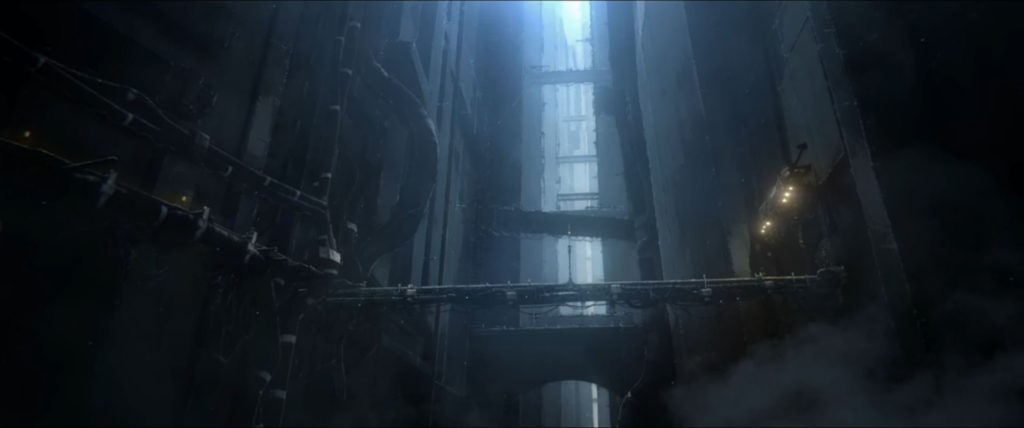
“Nobody knows when the world became this way”
The opening narration rings through silent, cold, mechanical environments, alluding to this perhaps once being a place that we knew. The world, known as the city, is a stark, dystopian future dominated by giant technological structures that reach as far as the eye can see. Technology has evolved into terrifying forms such as builders, safeguards and exterminators who continually expand the seemingly endless city in all directions. Systematically, hunting down the remnants of humanity, who have long since lost the ability to communicate with the machines. If this was the world as we know it, it is now unrecognisable and it doesn’t belong to us anymore.
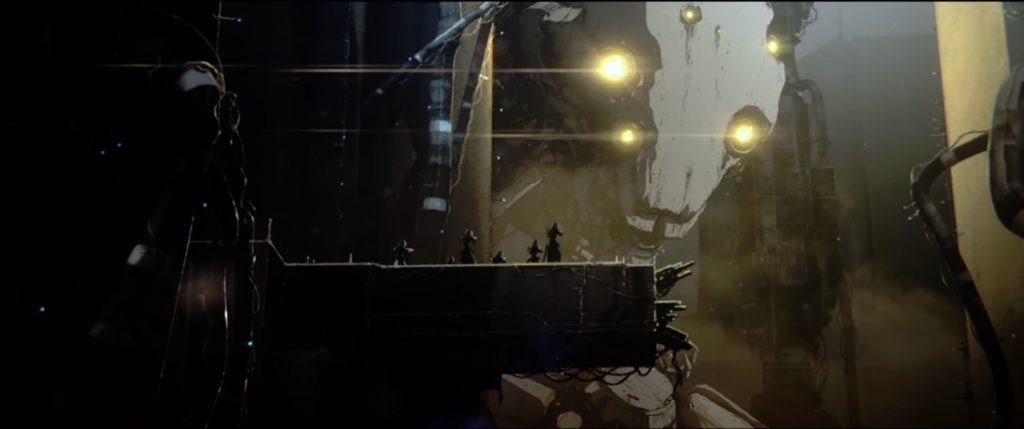
This is immediately made apparent through the circumstances and visuals we are introduced to from the onset. Following a group of teenage Electro-Fishers, a small tribe of the few remaining humans, led by a bold young woman named Zuru. Against the wishes of their elders, this group of teenagers are venturing out beyond the safety of their settlement in order to find food their colony desperately needs. It is on this expedition that they discover Killy, an enigmatic stranger with an imposing presence. Armed only with a humble-looking handgun, known as a Gravitational Beam Emitter, that packs a deceptively powerful punch and makes short work of anything unfortunate enough to stand in his way. Through making his presence known in an explosive fashion, Killy rescues the group and makes clear his intention to find someone born with the Net Terminal Gene, a long-forgotten ability mankind possessed to communicate with and command technology. Zuru and the Electro-Fishers’ chance encounter with Killy sets into motion the events that will likely decide the future of this pocket of resilient survivors and humankind as a whole.
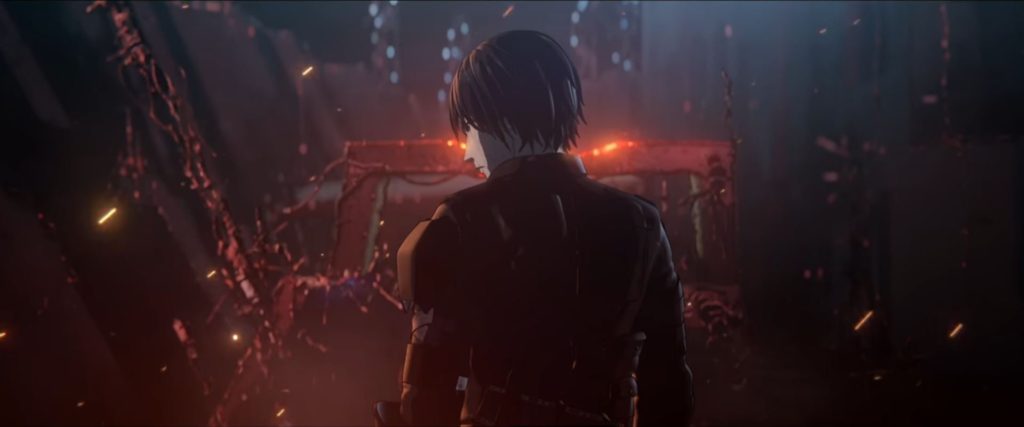
The film introduces us to a number of characters throughout, such as the main protagonist, Zuru, along with the more mysterious and technologically influenced characters like Killy and Cibo. Zuru is the central focus, a bold and sympathetic leading woman who asks many of the questions the viewer would have in the circumstances. While allowing Killy, the main character in the manga, to maintain his stoic, silent demeanor. An approach both Seshita and Nihei clearly used to ease the viewer into the world by providing information through the dialogue rather than relying entirely on the visuals. This character-driven approach to the narrative, while understandable, is not particularly to the film’s benefit. As this is a film with a relatively short running time, we are not really given much opportunity to really grow attached to the cast. This is a rather odd qualm to have with the film, particularly as the manga didn’t necessarily aim to achieve this over its many volumes. The manga is minimal in terms of dialogue and does not focus on character development, instead the story is communicated almost entirely through the visuals and Nihei’s incredible environmental storytelling. In the isolated situations the manga often presents, the lack of dialogue fits the setting. In a future where humanity is almost non-existent, the use of language as we follow a lone wanderer would be mostly trivial. However, the film has leaned more in the direction of a character-driven story by focusing on the perspective of the human cast, but does not give us much to grow attached to them.

The scenes of desperation we are guided through, all show the struggle humanity has to endure to survive in a world they have no place in anymore. This is where the film manages to find its footing in the narrative. The human characters are not particularly strong, although well acted by both Japanese and English voice cast, but the situations they find themselves in continually remind us of the struggle humans have to endure in the city. Being hunted, the desperate struggle for food, rationing of equipment, and the lengths they go to try and alleviate some these hardships. Every helmetal or packet of ammunition lost is shown to be a great loss and all of this goes a long way in establishing the grim tone of the story. The setting of BLAME! is its most intriguing aspect, and the dark tone and struggle that is presented through all these details only emphasises how dark this future really is for the survivors.
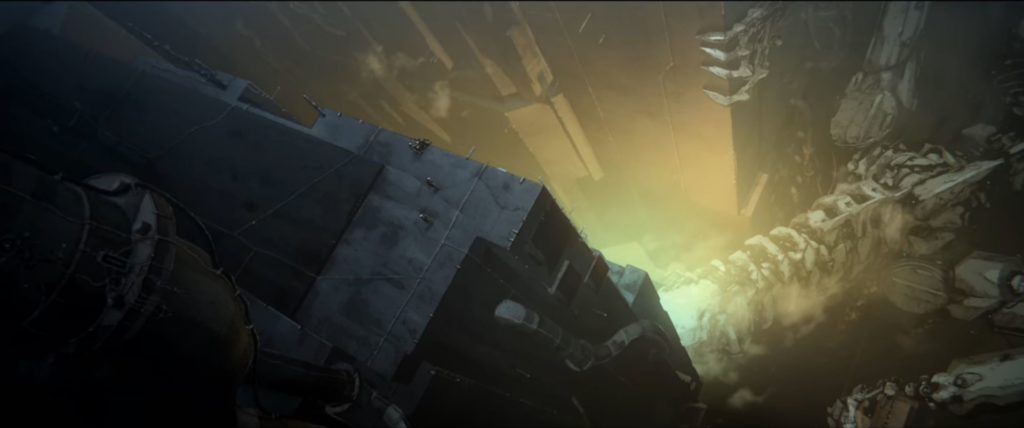
The film may differ from its source material in many ways through its narrative choices, but both have a strong understanding of the key component to the story: the world building. The city is cold, industrial and near incomprehensible in size, with all human scale and proportion seemingly lost. Many questions can be asked about the city but details are sparse. Its origins are long forgotten through the Electro-Fishers’ generations of existence in their small corner of the city. They are never able to venture too far out into their hostile surroundings and even with Killy’s introduction from beyond, there is little information he remembers from his travels. That and he is not really much for conversation. The lack of understanding for the city is actually a strength when it comes to the world building. The visual language of the film, much like Nihei’s artwork, communicates enough for the viewer to be intrigued and form the bleak atmosphere that’s intended. Nihei’s art is intensely detailed with jarring perspectives of alien built forms reminiscent of the work of H.R. Giger, while Polygon’s CG rendering is far more minimal and clean in terms of detail, but uses these vast forms to emphasise the city’s colossal scale and imposing presence. It’s no surprise the environments of BLAME! are so well realised as Nihei has a background in architecture and this subject provides a good example of how these two differing styles can convey similar effects. For example: a centuries’ old Gothic church, intrinsically detailed and elaborate, can use a completely different architectural language from a Modernist church with its simplified, monolithic forms, but both can provoke similar emotions of someone in the space. This is true of the film’s contrasting visual representation of the city. The manga and film’s very different depictions of the city work similarly to this. They may have a different visual language, but can still achieve the same ominous outlook of the future.

Continuing on the point of the visuals, the animation provided by Polygon Pictures is their usual 3D CG style that those familiar with any of their previous work, such as Knights of Sidonia and Ajin, will already be accustomed to. There do seem to be some improvements, particularly when it comes to the lighting, which really stands out against the muted black and gray environments. The character movement and facial animation seems to have improved but still struggles to be as expressive as the looser, hand-drawn work of traditional animation. Understandably, 3D animation is not to the taste of some and it still suffers from the intentionally dropped frame rates that Polygon continue to incorporate. These are still very noticeable during the slower sections of the story with more subdued movement. It may be a stylistic choice to better suit the pace of traditional animation, however, it just makes the motion of characters look jumpy and uncomfortable. It’s a shame, as the film’s action scenes appear far more fluid and really showcase the potential cinematic strengths of this CG approach to animation.
Composer, Yugo Kanno, has done an excellent job in creating an atmospheric soundtrack that communicates many of the story’s themes as effectively as the visuals. There are the expected booming orchestral pieces that build tension and really emphasise the bigger action-packed scenes. As well as electronic music influences expected of the science fiction genre, but the surprising musical influence was that of spaghetti westerns. Kanno was tasked with composing songs that took motifs of old western soundtracks and updated them for a modern setting. Clearly evident with songs such as Kiri I and Joshou which take influence from the soundtracks of this genre with choir chants, the light plucking of strings and the spaced-out ringing of piano keys that feel like they are echoing through the film’s empty environments. These solemn tracks are more akin to Ennio Morricone’s work such as Once Upon a Time in the West, and give a subtle nod to the comparisons that can be drawn between western protagonists and Killy as an Eastwood-esque, gun-toting wanderer.
In terms of on-disc extras available with this release there is very little. Outside of the expected English and Japanese language audio and subtitle options the only extra is the behind the scenes Making Of. This is a series of short interviews with many of those involved with the production. It’s only about thirty minutes but is actually a really interesting watch and showcases the attention to detail and passion the studio had for the project, from its initial development to its first screenings.
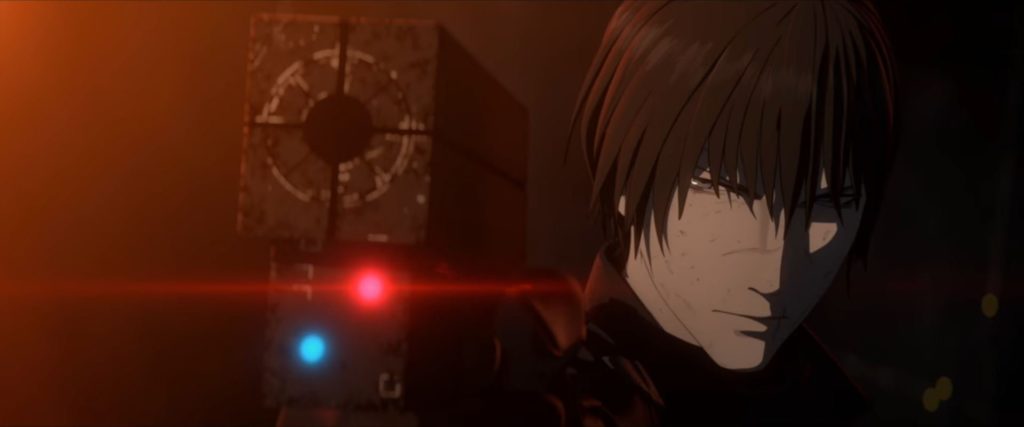
Looked at as an adaption, I feel that BLAME! may be seen as a disappointment to some fans of the original with what it attempts to do differently. As an approachable introduction to the world, I think Hiroyuki Seshita has done an admirable job laying the foundation for other stories to be told in this future (a second film has been confirmed to be in development). It is a collaboration with the manga’s creator, and still has the same core of the original work, but chooses to focus on many other aspects and present them in different ways. I feel these choices mostly work, particularly when the intention is to create a representation of Nihei’s world that can find a wider audience.
As well as being available for purchase on Blu-ray and DVD, BLAME! Is currently available on Netflix UK and is part of this years Scotland Loves Anime line-up. This is Scotland’s international animation festival will be screening BLAME! on Friday the 19th of October followed by a producer Q & A.
“The screening will be followed by a Q&A session with Polygon Pictures producer Jack Liang, talking about their history in 3DCG production and the influence of Netflix upon the anime industry”. – Scotland Loves Anime


